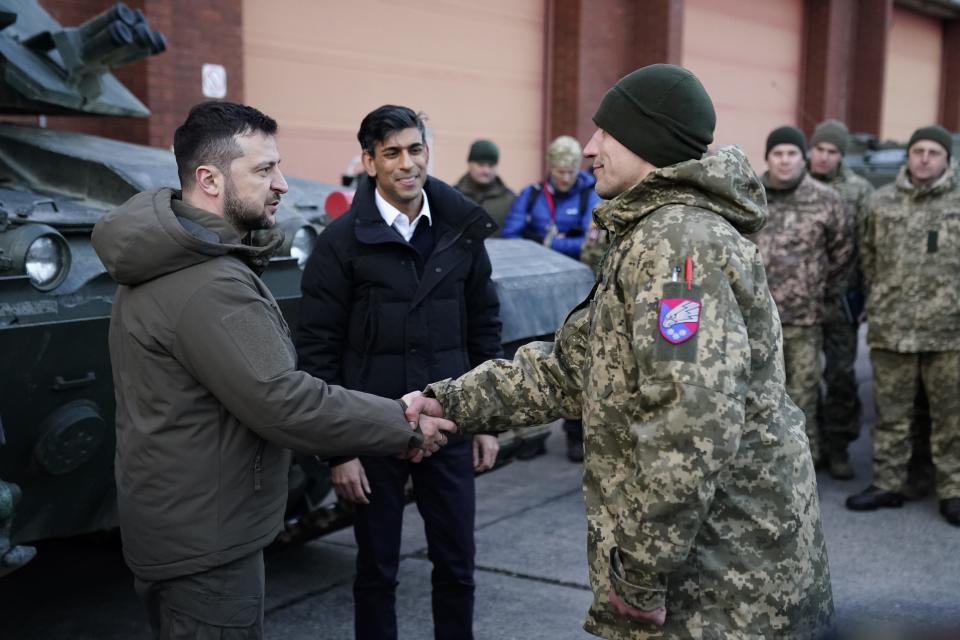2 war experts say British armor has the same production flaw that contributed to Nazi Germany's downfall
A retired UK colonel and a war historian are sounding the alarm on Britain's tank production.
They warned against relying on advanced weapons too costly to scale up, a mistake Nazi Germany made.
Their chief concern is with the Challenger 3 tank program, which is set to produce 148 vehicles.
A retired British army colonel and a World War II historian are urging UK authorities to recalibrate weapons production, saying Britain is too fixated on building world-class military tech that it can't scale up.
This was the same problem that partially brought Nazi Germany to its knees, wrote Hamish de Bretton-Gordon and James Holland in a commentary published Wednesday by The Telegraph.
"It would appear we are doomed to repeat the mistake Nazi Germany made in the Second World War — relying on sophisticated weaponry that is too expensive for mass production and will never produce decisive battlefield results," the pair wrote.
Holland is a World War II historian, and de Bretton-Gordon led several commands in his 23-year military career, including NATO's Rapid Reaction CBRN Battalion and the UK's Joint Chemical, Biological, Radiological, and Nuclear Regiment. Before he retired, de Bretton-Gordon was an assistant director in intelligence services.
Not enough tanks
One of the pair's major concerns is the Challenger 3 program, which aims to supply the UK with its latest, best-in-class tank fitted with a powerful 120 mm smoothbore gun.
But the UK is planning to field only 148 of them, a number that de Bretton-Gordon and Holland said was far too small to fill the country's defense needs.
They recalled how Nazi Germany had obsessed over the quality of its tanks but wasn't able to produce them at the scale of its opponents. Hitler's industrial complex built no more than 8,500 Panzer IV vehicles, its most common tank of the time, for example, and produced fewer than 500 of the costly King Tiger later in the war.
Holland and de Bretton-Gordon contrasted that with the US producing more than 50,000 Sherman tanks and the Soviet Union building up to 84,000 T-34s.
In total, Nazi Germany built just under 50,000 tanks during the war, while the US built more than 100,000. The Soviet Union built nearly 120,000 tanks.
The sheer numbers made a difference in World War II, and de Bretton-Gordon and Holland argued they would make a difference now.
"The old adage of 'mass matters' is as relevant in the battle for the Donbas today as it was for the battles of Kursk, a few kilometers to the east in 1943," they wrote.
The UK's current main battle tank is the Challenger 2, with an estimated inventory of 227 vehicles. But a UK government report in March 2023 said that only about 157 were available for operations in a 30-day notice.

The war experts wrote that while Western tanks such as the Challenger 2 and the Leopard 2 might win against their adversaries in one-on-one fights, they weren't making enough of a difference in Ukraine because Kyiv lacked the mass to push through Russian lines.
As the pair put it: "One leopard is no match for a pack of hyenas."
Advanced technology can still turn the tide of battle, but it must be a given that the enemy cannot counter the threat, they added.
Both called on UK authorities to "wake up," writing:
Whoever leads the country next needs an urgent Defence Review. Two massive aircraft carriers and 150 tanks are no deterrence to the likes of Russia or China. And it is these countries which we need to design our deterrence around, not some imaginary enemy that suits single service rivalries. Ten billion pounds spent on tanks rather than carriers would give us the conventional deterrence so lacking at the moment, for instance.
Notably, de Bretton-Gordon was also once a commander of the 1st Royal Tank Regiment.
Russia's mass-production game
In June of last year, de Bretton-Gordon praised British armor for its quality in his commentary on the war in Ukraine. He said that Kyiv's battle doctrine allowed it to effectively use tanks supplied by the UK against Russia's low-morale conscripted forces.
"As a former tank commander, I know the Challenger 2 vastly outmatches what's left of Russia's armor," de Bretton-Gordon wrote.
While de Bretton-Gordon continues to laud the capabilities of British tanks, the optimism and global conversation regarding Ukraine has shifted as Russia puts its economy on a war footing.
Moscow quickly expanded its defense manufacturing complex and recruitment drives to fuel mass reinforcements in Ukraine, raising the prospect that it could sustain its heavy losses for several years.
Ukraine, meanwhile, is desperately trying to fill its ranks with more men and had a significant tranche of US aid delayed in Congress for months. While the flow of military equipment has resumed, Kyiv's need for manpower is still great.
Read the original article on Business Insider

